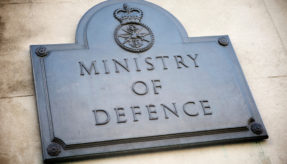
The National Audit Office (NAO) has released a report that the Ministry of Defence (MoD) has made progress in meeting its environmental sustainability objectives but there remains room for improvement.
The NAO’s ‘Environmental Sustainability Overview’ report follows a request by the Environmental Audit Committee (EAC) to examine how far the MoD has embedded environmental sustainability in its estate management, procurement, governance and policy-making.
The MoD is critical to the government’s sustainability goals due to its size, supply chain, and the amount of land it controls. It will play a fundamental role in meeting the Greening Government Commitments (GGCs) since it is responsible for 50% of government greenhouse gas emissions reported against this target.
The NAO findings reveal that that year, the Department reported 830,000 tonnes of greenhouse gas emissions – a 42% reduction since 2009-10, which means it has achieved its GGC target for reducing carbon emissions.
It states the MOD is in a good position to achieve other GGC targets for waste reduction and waste to landfill. However, it will struggle to meet those on waste recycling, the use of paper and reducing domestic flights.
The report also shows that 1.8 million tonnes of emissions from military activity such as operating defence equipment fall outside the scope of the GGC targets, and these emissions are reducing at a slower rate.
The MoD’s energy mix has not changed significantly over the last 10 years, and the Department has made little progress in increasing the proportion of its energy drawn from renewable sources.
Further, the Department owns or otherwise controls approximately 1% of the UK’s land mass, and over a third (38%) of this area is designated as sites of special scientific interest (SSSIs). Natural England has assessed 48% of the Department’s English sites as in ‘favourable’ condition, comparing well to the English average of 39%. However, more than half of these have not been assessed since at least 2011 with concerns that this figure is no longer accurate.
image © Willy Barton / Shutterstock.com
If you would like to join our community and read more articles like this then please click here.







